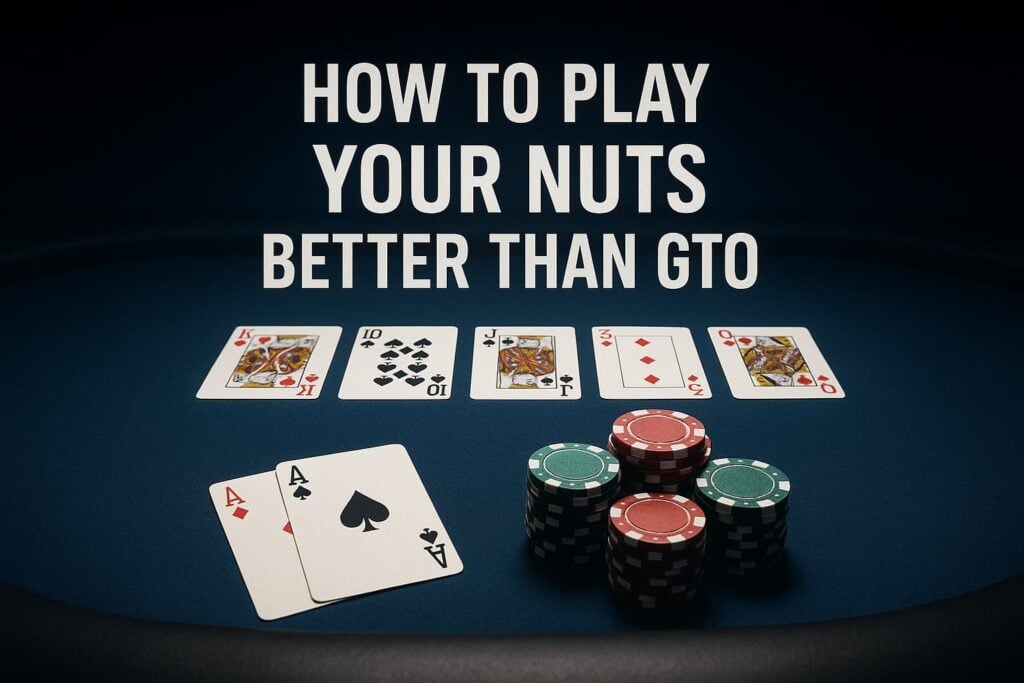Winning a big pot with the “nuts”—the best possible hand—is a feeling every poker player chases. But what if you could have won more? Effectively playing your best hands is a critical skill that can dramatically boost your win rate. While it feels great to win, leaving money on the table is a missed opportunity that impacts your long-term success.
Many players strive for a Game Theory Optimal (GTO) strategy, which is a solid baseline. However, GTO assumes you are playing against an opponent who also makes theoretically perfect decisions. The reality is that most opponents don’t play perfect GTO, and to truly maximize your winnings, you need to move beyond a rigid strategy and exploit their specific tendencies.

From GTO to Exploitative Play: Know Your Opponent
It can often feel like you’re playing a guessing game, like Pac-Man, unsure of the optimal move. The key to navigating these spots and extracting maximum value is to understand your opponent’s habits.
Your strategy should adapt based on who you’re up against:
- Against a “Calling Station”: If you’re facing a recreational player who loves to call down with any pair, the adjustment is simple: value bet your nuts much more frequently.
- Against an Aggressive Player: When up against a highly aggressive opponent, you can often win a bigger pot by checking your strong hands. This gives them the green light to continue betting their money into you.
Using Population Data When You Have No Reads
In larger player pools, like those found in midstakes games and below, you often won’t have specific information on every opponent. In these scenarios, the key is to leverage population data. This data reveals the common tendencies of the average player in that pool, giving you a powerful strategic advantage.
A Real-World Example: Pocket Jacks on an Ace-High Flop
Let’s consider a common, tricky scenario: you hold pocket Jacks in a three-bet pot, and the flop comes with an Ace. A strict GTO approach might suggest a mix of betting and checking. However, an exploitative strategy based on population data can yield a much better result.
Here’s how we can break it down using data on average player tendencies:
- Facing a Bet on the Turn: Population data shows that, in this specific situation (in position, on an ace-high board in a three-bet pot), the average player overfolds when facing a bet. This means they fold more often than GTO would suggest, making your value bets less profitable because you won’t get paid off as often.
- Facing a Check on the Turn: On the flip side, when you check to the average player in this spot, they tend to bet even more often than GTO recommends.
Combining these two insights leads to a clear, exploitative adjustment:
checking your value hands on the turn is the perfect exploit. You induce more bluffs and get more value from an opponent who is likely to bet for you.
Even when considering the river, this strategy holds up. While opponents play closer to GTO after they have already bet the turn themselves , the data shows that the average player also overfolds to a third barrel on the river. Therefore, checking the turn remains the most profitable line for your value hands in this scenario.
By understanding where the average opponent deviates from GTO—where they overfold and where they overbet—you can transform a confusing spot into a clear, strategic advantage, ensuring you get the maximum value every time you have the nuts.
